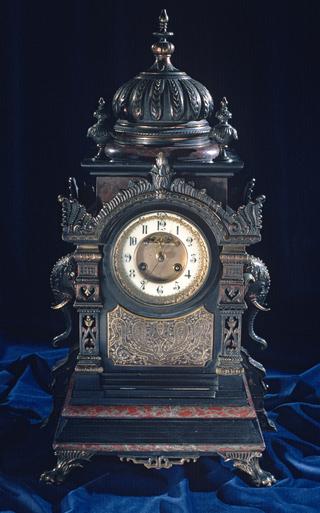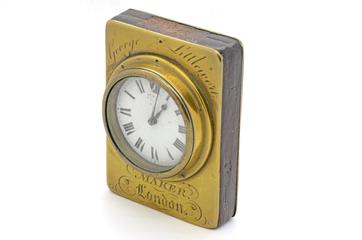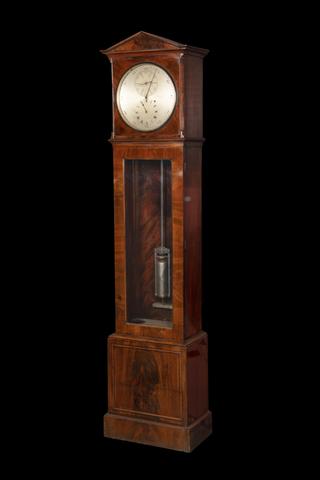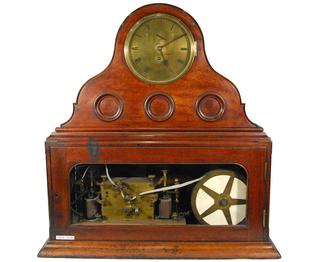
'Railway Time' clock
- maker:
- William Avison










Wall Clock in octagonal case with Prince of Wales Feathers above makers name "W. Avison, Railway Time, York", made by William Avison, England, 1840-1880.
Until the middle of the 19th century, time was largely measured using sundials. Although Britain is a relatively small island, this still had implications for time - depending on the time of year, the sun rises in Plymouth 20 minutes later than it does in London, leading to a variation in time across different locations in Britain. When transport was largely conducted by road, this did not present a problem, as it was easy to adjust one's watch by a few minutes as one travelled. As rail transportation because more popular, however, this became an inconvenience, and even dangerous. The railways were united, running on the same tracks in a complex pattern, which required meticulous time management to prevent a severe accident. This necessitated the introduction of a 'standard' time. In November 1841, the Great Western Railway announced that it would observe 'Railway Time', or Greenwich Mean Time across its network, and other railway operators followed their example. It was sometimes referred to as 'London Time'. In 1847, the Railway Clearing House recommended that each railway adopted 'Railway time' as standard as soon as the Post Office permitted them to. Henry Booth, the secretary of the Liverpool and Manchester Railway, pushed for standard time to be adopted across Britain. Although no statute or law was passed, the railways helped to convert cities to standard time through force of example, although this did not happen uniformly - Exeter did not adopt standard time until November 1852. It was estimated that by 1855, 98 per cent of public clocks in Great Britain and Ireland were set to Greenwich Mean Time.
Details
- Category:
- Railway Timepieces
- Object Number:
- 1975-7528
- Materials:
- wood and brass (alloy)
- Measurements:
-
overall (without bracket): 435 mm x 435 mm x 126 mm, 5.82 kg
- type:
- wall clock
- credit:
- From British Rail, Historical Relics




